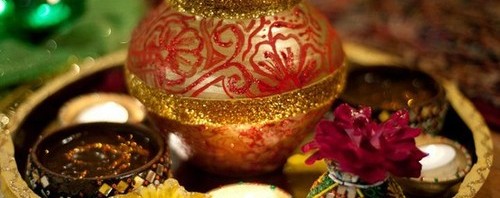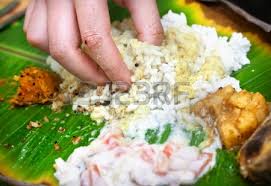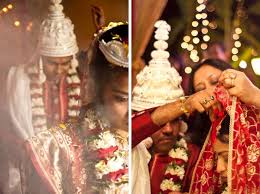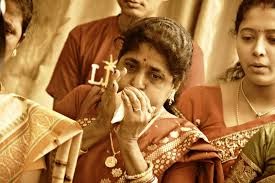A Bengali wedding in the yester years was not just a great family union; the day gave an opportunity to exhibit within relatives and friends what you are proud of. Women got a chance to display their most expensive jewellery, exclusive collection of sarees. For younger ladies a chance to dress up and look awesome, like bong Cinderella’s. Bachelor’s in silken dhoti and heavily embroidered kurta, obviously competing for the most eligible prince charming prize. For married women a chance to remind everybody why in her youth young men passed by her house many times, to have a peek at her standing on the verandah. Her husband always by her side, still guarding own territory, like the Lion king! Children it is fun times, no homework, only play time with the cousins.

What was a Bengali marriage like four-five decades ago? Definitely not like what it is like today. A marriage was conceived to be a union of two families. Elders of the family were more involved than the actual bride and groom. Caste, family back ground, status in the society and wealth of the two families were compared before a marriage was settled. Yes marriages were arranged! The parents of the groom or bride set the marriage up. The two souls who were actually getting married hardly had a chance to voice their opinion. Sometimes they even met for the first time on the marriage floor. Once married, they were supposed to stay together for the rest of their lives and produce babies to take the family name forward. This was a common fact amongst most Indian Hindu marriages.

Marriages are a multi-day event and each day has its own significant functions, ending with the reception from the groom side. The countdown began once the marriage was fixed. List of the invitees was prepared; marking the list who will be invited for which day of the function. Very close relatives were invited for all the days and distant for a day or two. Invitation cards were printed and two three small groups went out for distributing the invitation cards because invitation by post was not taken in good spirit. Relatives living within a 50-60 kilometers radius had to be personally invited. Very few people had telephones, post cards were sent in advance written “we are coming to invite you” to ensure they stay home and keep arrangement of food, for the group coming to invite.
The wedding family was required to make arrangements for the food and stay of the close relatives who would come a few days before the wedding to stay through the wedding. In those days people had own houses with extra rooms, also good relation with neighbors helped in accommodating guests. The ladies of the family had very heavy responsibilities of selecting all the sarees, cosmetics and jewellery venturing the various showrooms in the
city. Looking after the comfort of the guests was another of their major responsibility. The Bengali family cooks from Orissa had the great responsibility of serving delicious Bengali cuisine.
In those days people had ancestral house with huge roofs. The roof tops would turn into a hall with bamboo frame, tarpaulin and color clothes. One side of the roof would be used for cooking and the rest served as the banquet hall. Hand woven cane fiber mats were laid on the roof in rows for sitting, a piece of banana leaf in front of every mat to serve as plate and earthen glass to drink water from. In those days people sat on the floor and food was served to them by the members of the family; appetizers, main course followed by sweets.

The last couple of days before the wedding were very busy. The entire list of spices, oils, cereals, flour, rice, vegetables and banana leafs, earthen pots have to be procured and stocked. The kids were entrusted the duty of washing all the earthen pots and wiping the banana leafs clean.


Two days before the wedding the cook will be busy making sweets. There was no gas burners, all food were cooked burning wood. There would be a host of kids and adults keenly waiting to taste the first hot lot of sweets.

On the day of the wedding, at dawn one group will go to get the fish from the wholesale market. The other group will be in charge of supervising the quality and quantity of meat at the meat shop. The cook and his team of helpers will be busy all day cooking for the evening feast. The cooking area usually became like a furnace with eye burning smoke of the burning wood.
By evening all corners of the house is all lit up with fancy lights, women’s having spent all afternoon in their hair styling and make up are ready to show their best looks in expensive sarees and gold jewellery. Men would be dressed in their traditional best. At the door will be the musicians playing ragas in Shehnai. Guests start to pour in as the evening progresses. They meet the bride and groom to give them their greeting and gifts and proceed to the banquet.



There would be a big crowd to witness the wedding taking place and the place is so noisy with people shouting instructions and the blowing of conch that, sometimes the priest had to repeat the mantras. Not many people owned cameras in those days; people with cameras were elite and allowed to be right in front to take pictures, black and white, as there was still no color lab in Calcutta.
As the night progresses the guests start to leave for their respective home, the monotony of music stops at late night, the hustle and bustle slowly fade away, family members are tired after a long day and go to bed. The noisy house becomes so silent. Only one can hear the cook’s helpers cleaning their large cooking pots and pans. Barking of the happy street dogs at the nearby dust bin, where all the waste food have been dumped. They too have a feast.



https://confessionsofabengali.wordpress.com/
LikeLike
Thanks for posting your site address!.
but you left no comment for me to reply upon.
LikeLike
My apologies; I’m new to this whole blogging thing and without revealing who I am – I have been struggling with how to get similar minded people to read my woes in hope that maybe it’ll help someone else or raise some issues.
Any advice?
LikeLiked by 1 person
If you want to stay anonymous you can create a new mail address or put in your pen name. But respond and communicate. Best of luck.
LikeLike